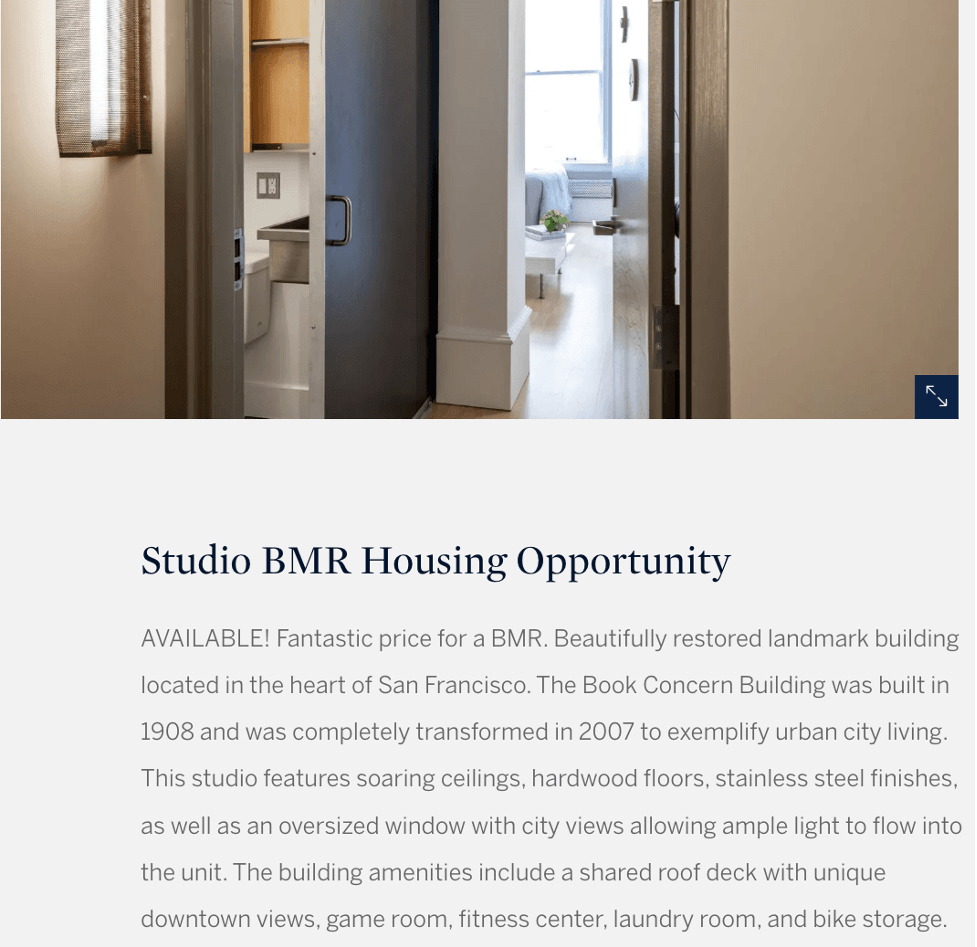February 29, 2024
How to Write a Killer Real Estate Listing (With Examples)
Trying to sell a property but feeling lost in a sea of listings?
It can feel tough to get noticed when there are so many properties to compete with.
But it’s not impossible to stand out when you craft your listing right.
The key is to showcase the features of your client’s home so well that buyers can see themselves living there.
Let’s dive into how you can create the perfect real estate listing that grabs attention and appeals to the right buyer.
How to Write Real Estate Listing Descriptions That Sell
A well-crafted real estate listing description can make a huge difference. It’s like a magnet that pulls in potential buyers.
But a powerful property listing comes down to more than just the words you write.
It’s a mix of selling points, visuals, and accurate information that matches the right buyer to your home.
Here are some key elements to include in your listing descriptions:
-
Professional photos: High-quality photos show off your home’s best features so prospective buyers can see whether the home works for their needs.
-
Beautifully staged rooms: Staging makes a space feel inviting and helps buyers imagine themselves living there.
-
Descriptive title: A catchy headline grabs attention. Use your title to sell the dream by showing buyers what your property has to offer beyond basic bricks and mortar.
-
Well-written listing description: This section is your chance to show off the house’s most notable features. Help the buyer paint a mental picture, highlighting key elements like the floor plan, square footage, room descriptions, and so on.
-
Notable features: Emphasize unique qualities or upgrades. Tell buyers about the hardwood floors, marble countertops, or brand-new bathroom you installed.
-
Proximity to schools, local amenities, and transportation: Buyers want specific details about the neighborhood they’ll be living in. Use this as a major selling point.
-
Sales price: List the price upfront to meet buyer expectations.
Giving accurate and rich information is crucial to building a vision for potential buyers. You want to motivate them to see more.
Don’t overpromise, though.
If your listing says there are stunning views or it’s in a desirable location, that must be true.
Exaggeration disappoints potential buyers. They’ll simply turn away before they even reach the doorstep.
So, now that you know the basic elements that go into a good real estate listing, let’s review how to write one.
1. Write a Great Property Headline
Not every real estate website offers a spot for a headline. But when they do, it’s your chance to reach a dream buyer.
Figure out what your target buyer looks like and what would draw them in. Lead with that.
Your headline should grab the attention of the exact person looking to buy your property.
It might be a “Luxurious Family Home with Panoramic Views” or a “Chic Bachelor Pad in the Heart of the City.” Consider what it offers to whom and speak directly to them.
Use emotive words that tug at their heartstrings.
A headline like “Dreamy Lakeside Cottage Awaits Your Homey Touch” speaks to those who value beauty and potential.
Speak to the buyer’s emotions and desires so they can’t scroll past.
Highlight the best parts of the house right from the start.
Does your client’s home offer “Stunning City Views from Every Room?” Say it loud and proud. There’s no time to act modest about what makes your property shine.
Take the following property listing, for example.

It says it’s an “Outstanding Renovation Opportunity, Gracious Presidio Heights Home.”
This is enticing to a particular type of buyer — someone looking for a big renovation project in a swanky neighborhood. But it’s not right for someone who wants a done-for-you new-build home.
Notice how it draws buyers in with words like “outstanding” and “opportunity.” It also mentions its desirable location to underscore the home’s value.
2. Be Accurate in Your Description
It’s tempting to exaggerate so your client’s home sounds like a palace of dreams. But stretching the truth won’t help sales.
Imagine viewing a “Spacious ground floor studio with a private garden” only to find it’s a compact apartment with a tiny balcony.
Buyers will spot the lie the moment they visit, and they’ll walk away. This leads to broken trust and can prevent potential referral opportunities. Not to mention, negative impressions can lead to poor reviews. Your reputation is on the line, so being honest and accurate is key.
Here are a few ways to make sure your property descriptions are accurate:
List renovations and updates:
If your client upgraded your kitchen or added a new roof, say so. But be honest about the work that’s been done. Don’t sell a cheap facelift as a full-blown renovation.
Point out flaws and shortcomings:
No house is perfect. If it has a tiny kitchen or isn’t in a prime location, let buyers know before they get there. This way, they can decide if these factors affect their needs before wasting both of your time.
Work needed:
If the house needs work, say so. Point out the needed upgrades so that potential buyers can decide if they have the budget and time to make them before they agree to see it.
Remember, honesty is the best policy. You want potential buyers to trust you so you can form a relationship that leads to a sale.
Add Value and Avoid Red Flags
While honesty is absolutely crucial, it’s also wise to consider word choice when writing a real estate property description.
You want to add value as much as possible. While you need to be truthful about potential setbacks, try to sidestep phrases that scream “too much work!”
When it comes to adding value, try words that paint a vivid picture of the property’s key features and functions to show how the property is unique in serving the buyer’s needs and desires.
Try words like:
-
Breathtaking
-
Landscaped
-
Impeccable
-
Luxurious
-
Upgraded
-
Spacious
-
Tranquil
-
Modern
-
Private
-
Sunlit
These words highlight the positives in a specific and appealing way.
On the flip side, try to avoid phrasing that might scare buyers off. Cut language that suggests the property is more hassle than it’s worth.
Avoid terms like:
-
Maintenance special
-
Investor special
-
Cosmetic
-
Potential
-
Project
-
Dated
-
Fixer
-
As-is
-
TLC
-
DIY
These words imply that a home requires extensive and expensive renovations.
This type of language is likely to encourage buyers to pitch a lower price and can deter those who want a move-in-ready home.
Here are a couple of good examples to learn from …
The following San Francisco downtown studio listing shines a light on the property’s unique attributes with phrases that emphasize the building’s historical charm and modern updates.

The listing includes phrases like “Beautifully-restored landmark building,” “Completely transformed in 2007 to exemplify urban city living,” “Unique downtown views,” and “Ample lighting.”
This showcases the property’s strengths without ignoring reality.
Now check out the following New York property that could use an update.

Instead of focusing on what’s missing, this listing is creative about angling the work in a positive light. The phrase “Come with your decorating ideas” is a clever way to acknowledge that the property needs some love. But it paints it as a canvas ready for personalization.
Focus on the positives and choose your words carefully. This gives you an attractive listing without misleading potential buyers.
3. Highlight Unique Features
Make your online listing pop by showing off what makes your client’s property special.
Whether it’s a gourmet kitchen with quartz countertops or a spacious backyard with a private pool, shout about the details that catch a buyer’s eye.
Upgrades matter, too.
If you’ve added solar panels or built an outdoor kitchen, mention these plus points. These improvements can turn a “maybe” into a “must-have.”
Don’t forget to highlight all the little extras.
Does the property come with state-of-the-art stainless steel appliances or a built-in espresso machine? Put it in the listing. These features suggest luxury and convenience, and they add a little bonus to make your client’s property more appealing.
Don’t forget to talk about the surrounding area and what it has to offer.
Is your listing in a sought-after school district or close to cozy coffee shops? Perhaps there are breathtaking mountain views or free access to a community fitness center.
These local perks can sway buyers to take a closer look as you help them imagine a whole lifestyle around their new home.
4. Use Great Photos
Photos are the heart of your real estate listing. Most buyers will notice your property photos first, so it’s important they stand out.
High-quality, professional photos make all the difference. They show off your home in the best light, helping buyers imagine themselves living their best life in your client’s property.
Here are a few top tips for creating excellent property photos:
Maximize natural light
Take photos in the daytime so everything is bathed in natural light. Natural light makes spaces look bigger and more inviting. To get the most out of this, try to buy hanging mirrors that reflect this natural glow.

Show off all the selling points
Take a picture of every room and highlight special features. If you miss a room, people will wonder what you’re hiding. They might miss them altogether if you fail to show them the best bits to look at.
Use a professional photographer
A real estate photographer knows how to capture your home from the best angles. A professional will ensure that each photo looks amazing.
Declutter and clean
Messy spaces are off-putting. A tidy space is much more appealing. Remove personal items and try to declutter as much as possible. Give the place a good cleaning to make it look fresh.
Stage your property
If your home is empty, it’s hard for buyers to imagine themselves enjoying the space. Staging turns a bare property into a home. If your client doesn’t have the furniture and furnishings to do this, try virtual staging.

Virtual staging takes your listing to the next level.
It’s a super cost-effective way to improve your property’s appeal without lugging furniture in and out.
With Virtual Staging AI, you can use artificial intelligence to declutter digitally and demonstrate different furniture layouts to suit different tastes.

Virtually Rendered with Virtual Staging AI
This way, potential buyers can visualize the space’s potential rather than trying to imagine it on their own.
5. Proofread Carefully
Before finalizing your client’s property description, proofread it very carefully.
You need to check your description for spelling, punctuation, and grammar mistakes.
This might seem unimportant, but small errors like this can degrade your listing, making it appear unprofessional.
A polished, error-free description shows potential buyers you’re the real deal. Plus, careless mistakes can imply a subpar home.
First, read the listing aloud.
This helps you catch mistakes you’re overlooking when you’re reading in your head. You also get a better feel for how the description flows.
Get feedback from someone you trust.
Share your description with a friend or family member who can read through it and point out anything you missed. They can also offer honest feedback on the description’s content and suggest improvements.
To make sure it’s absolutely perfect, try using a proofreading tool like Grammarly.

These tools find and fix common mistakes to polish your copy.
As a final note on grammar, cut flowery adjectives that don’t add value.
It’s tempting to describe your client’s home as “beautiful,” “stunning,” and “gorgeous” all at once. But this doesn’t tell the buyer anything important.
Instead, choose your words carefully. Use language that accurately describes the property’s best features without overwhelming readers with generic descriptions.
6. Include a Compelling CTA
A call-to-action (or CTA) is a message to encourage people to take action.
In real estate listings, your CTA might lead potential buyers to:
-
Schedule a property showing
-
Attend an open house
-
View a virtual tour

Sometimes, though, real estate listings don’t do well with CTAs.
Often, realtors forget to include one altogether. They simply list the property’s features without telling prospective buyers what to do next.
A bad CTA can be just as problematic.
Buyers won't know what to do if it doesn’t grab attention or it’s too vague.
You don’t want browsers that simply move on without acting. Tell them how to make the next move.
Use clear language that tells the buyer exactly what they need to do. Try phrases like “Call today for a viewing!” Or “Schedule an appointment here” to give potential buyers a clear next step.
Your CTA should also create urgency. If buyers think they can simply come back to check it out later, they might click off your listing.
Fear of missing out (FOMO) phrases like “Schedule your tour before it’s gone!” and “Book one of the last 5 open house spots” can encourage quick action.
You can also trigger action by offering something a little extra. For instance, you could offer a one-time discount or exclusivity.
For example, the phrase “Sign up for a private home tour” can make potential buyers feel like they’re getting special access.
Emotional language also entices buyers. Focus on the positive outcome the buyer will get from taking action with CTAs like “Discover your dream home now.”
Lastly, make it personal. Speak directly to the buyer so they can picture themselves taking the desired action. Try a CTA like “See yourself living here? Contact us now to make it yours.”
7. Legal Considerations
In the US, you must follow specific legal rules when listing your property. This helps ensure that your listing is compliant and ethical.
For instance, you must be transparent about any known issues with the property. While you don’t need to explicitly write these in your listing, you’ll have to disclose them to potential buyers at some point. Consider being upfront about them in the description to stay transparent from the get-go.
It’s also important to be accurate. It’s illegal to make false claims or deliberately mislead buyers. Put simply, if it’s not true or embellished, don’t write it.
Make Your Property Listings Shine
An amazing property listing shows off the property’s best features but sticks to the truth.
Remember to use fantastic pictures and emotional language to create a vision of how potential buyers could live.
If your property is empty, don’t just post pictures of a bare room. Use virtual staging to create the illusion of a cozy, homey place to live.
Virtual Staging AI is a powerful tool that makes your home look extra inviting with stylish digital furniture. Create a variety of room styles so buyers can imagine the space fitting their tastes. Simply upload your images and choose from several selected staging styles — ready in just a few seconds.
Ready to give it a try? Sign up here.
Best of luck with your real estate listings!